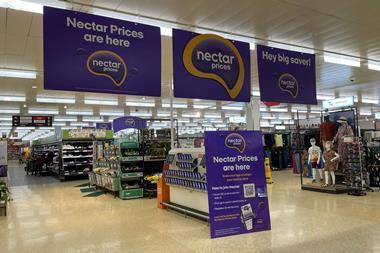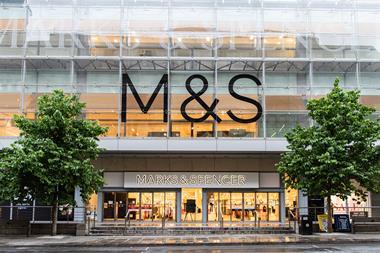Stores outperformed online at Marks & Spencer during a first half when the retailer smashed profit expectations. It’s a trend reflected across post-pandemic retail. However, Marks & Spencer has reported that in the year ahead, “we expect to see a return of stronger online growth.” So where is it placing its bets for digital investment? And what does it want in return?

The retailer has benefited from store upgrades and relocations as it has managed its estate more actively over the last few years. While that continues, the retailer will further up the ante on data and digital in anticipation of an uptick in online as it seeks to burnish its omnichannel appeal.
The importance of this is clear since 64% of orders were fulfilled through click and collect in the first half versus 59% previously. M&S chief executive Stuart Machin confirmed that a post-pandemic stores rebound had been expected but was “stronger than we thought.”
Over the half, however, store sales growth averaged about 6% while online was 4.5% – “so there wasn’t a lot in it.”
Machin added: “We are pretty confident that in the medium term, in the longer term, online sales still have the opportunity to grow faster than stores.”
There is, though, “more to do to drive online growth and improve returns on data, digital and technology investment,” he said.
Better conversion and personalisation
M&S reported: “The combined costs of investment in data, digital and technology, where we have a potential strategic advantage, and modernisation of legacy technology systems, will require careful prioritisation and sequencing.
“We are therefore re-evaluating our overall data, digital and technology investment envelope to ensure the sequencing of investment generates effective returns on investment.”
That will include the retailer’s app and Sparks loyalty scheme. Approximately 40% of M&S’s clothing and home online sales went through the app in the half – up from 34% last year – and there was “a further increase in the Sparks membership base driven by engagement initiatives”.
But Machin admits: “We’ve got lots to do… While active app and Sparks users did increase in the first half we do remain somewhat off target of 10 million app users.”
He wants to better drive conversion by improving the app shopping experience, as well as to increase Sparks scan rates and use customers’ data to provide them with a more personalised experience.
The M&S boss says: “We have a lot to do on personalisation, it’s not where I want it to be. Only 20% of customers get a personalised conversation with us. We’ve invested a lot in digital data IP and we want to see that accelerate in the next year or so.”
From legacy tech to future-forward efficiencies
Improved personalisation will be combined with wider technology programmes. Machin said: “We need to update our legacy systems to drive efficiency. We’re looking at how we can sequence that work.
“Some progress has been made – for example, the new forecast ordering and stock allocation system in food has been implemented in 60% of our categories.”
The increased attention to tech has met with the approval of broker Peel Hunt, which said: “From a position of relative strength, management is doing the right thing in reinvesting in tech and service.”
After a storming first half, M&S is much more circumspect about the remainder of the year, citing factors such as high interest rates and geopolitical volatility as reasons for caution.
However, even if the months to come prove more challenging, the retailer aims to be in the best position possible in the longer term – through improved tech, better stores and the more powerful combination of the two.


























1 Reader's comment